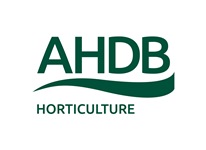All entries for Friday 10 May 2013
May 10, 2013
Latest insect captures at Wellesbourne
The yellow water traps have just been checked (last done on 7 May). The information can be found here: insects_captured_in_yellow_water_traps_located_in_an_overwintered_crop_of_swede_at_warwick_crop_centre_10_may.pdf
We recovered 4 cabbage root fly eggs from 15 cauliflower plants.
We also caught (since yesterday) our first carrot fly of the year!
Few aphids take to the air
The latest Aphid Bulletin has just been published http://www.rothamsted.ac.uk/insect-survey/Bulletins/Bulletin%202%202013.pdf. During Bulletin week 2: 29 April ̶ 5 May near normal temperatures were enough in windy conditions to tempt only very few of the low number of aphids into the air. Shallot aphids (Myzus ascalonicus) were recorded at Preston and Starcross. Myzus ascalonicus is a particular pest of shallots and strawberries. There is more information on this species here: http://www.rothamsted.ac.uk/insect-survey/STMyzus_ascalonicus.php. Other than that the only aphids found were tree aphids which do not feature on the bulletin.
The first two days of the current week (6+7 May) were warmer and reasonably still. The Rothamsted team have already looked at the samples from the Rothamsted trap for these days and found mainly tree aphids and no important crop pests. Many crops are well behind last year and growing slowly, but aphids are even further behind so are likely to arrive in more mature crops than usual, reducing risk of damage and virus spread. There has been a field report of nymphal potato aphids (Macrosiphum euphorbiae) with wing buds on an overwintering plot of Sweet Williams in southern England. This suggests that some winged forms should be ready for flight in the near future.
It remains possible that good weather over the next two months could lead to aphid populations doing well as a result of a paucity of natural enemies, which are likely to fare badly as a result of the current low number of aphids. If this happens it is most likely to affect direct feeding damage (e.g. on cereal ears) rather than virus spread, but late sown crops could still be at risk from viruses.

 Rosemary Collier
Rosemary Collier

 Please wait - comments are loading
Please wait - comments are loading
 Loading…
Loading…
